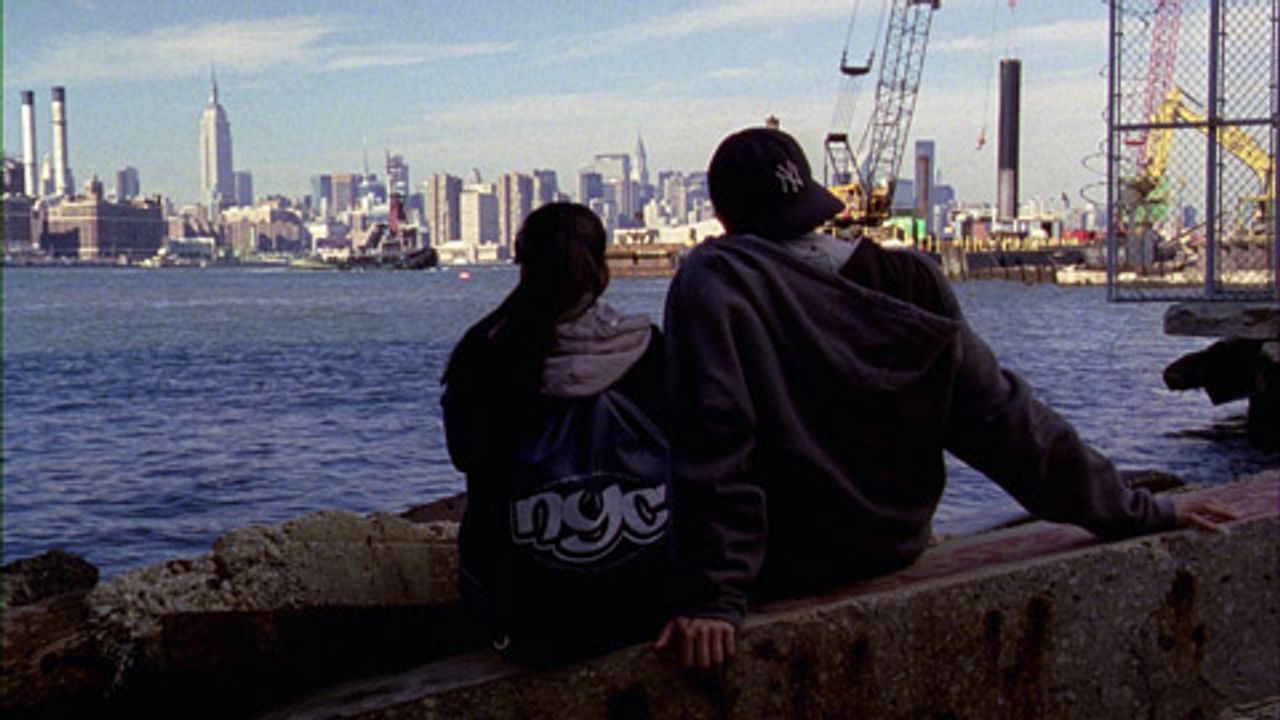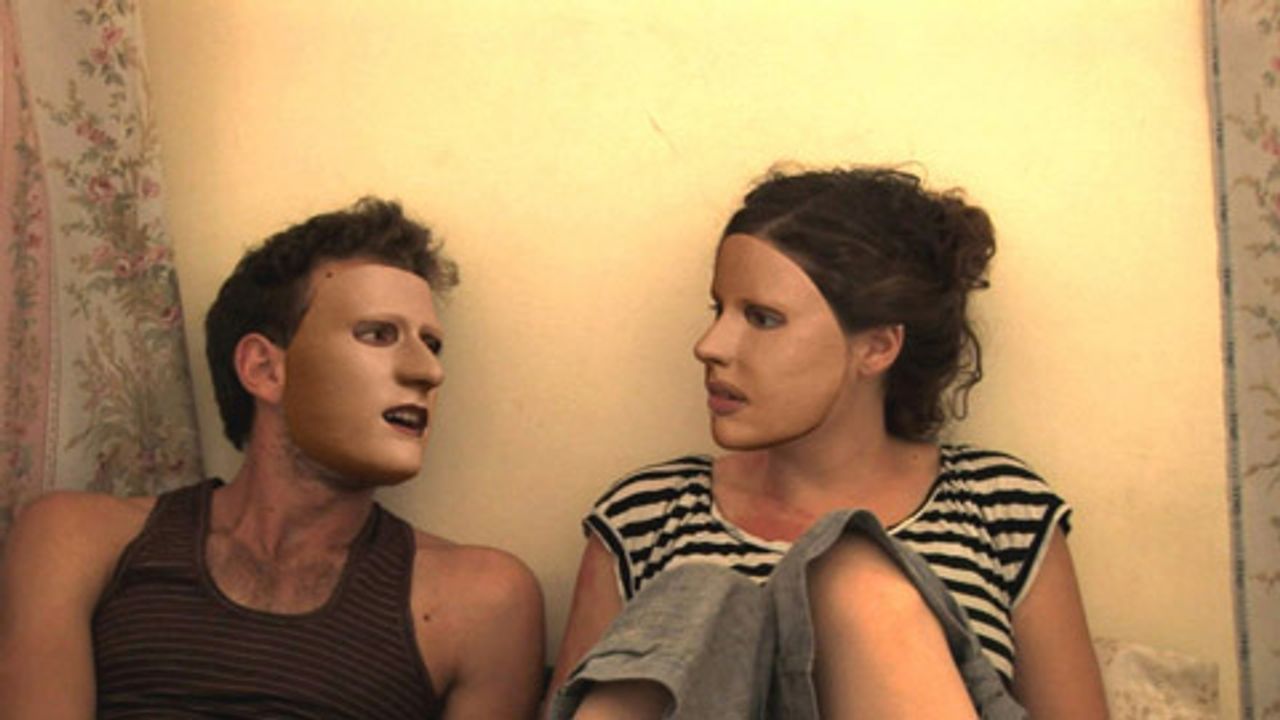This is the third of a series of articles on the 2009 San Francisco International Film Festival, held April 23-May 7. Part 1 was posted May 20; Part 2 was posted May 22.
Don’t Let Me Drown
New York City’s post-traumatic stress in the immediate aftermath of the September 11 terrorist attacks is the setting for US director Cruz Angeles’s debut feature film, Don’t Let Me Drown.
 Don’t Let Me Drown
Don’t Let Me Drown
Two teenagers in Brooklyn try to establish a relationship in what the young filmmaker terms an “atmosphere of hysteria,” characterized by a frenzied media, terror alerts, flyovers by F-16s and military helicopters and a ramped-up police presence. Although none of this is reproduced in the film, Cruz attempts to deal with its emotional repercussions.
Lalo (E.J. Bonilla) is the son of poor Mexican immigrants. He is charming, smart and level-headed; qualities that help calm a strained household. His mother (Yareli Arizmendi) has major worries, not the least of which is the health of her husband (Damian Alcázar), formerly a World Trade Center janitor, who now cleans up asbestos-filled debris at Ground Zero. Doctors have warned Lalo’s father that his lungs have been ruined.
The September 11 tragedy has hit another family directly. A sister to Stephanie (Gleendilys Inoa) died during the attack, and her third-generation Dominican family is struggling with its grief. Her father (Ricardo Antonio Chavira) explodes angrily at the drop of a pin and makes life miserable for his surviving daughter.
After meeting her at a birthday party, Lalo pursues Stephanie who, with difficulty, opens up to him.
But there are problems. Lalo wrestles, perhaps a little too gracefully, with low-grade stereotyping of Mexicans, who exist on one of the lowest rungs of the social and cultural ladder, among Hispanic immigrants themselves. Other pressures and obstacles crop up. In the end, there is something irrepressible going on between Stephanie and Lalo. Their union is meant to represent an alternative, and pure, reality—the opposite of a world of confused, angry and semi-conscious adults who are being pummeled by a hostile environment.
Don’t Let Me Drown is several artistic notches above the typical ‘hood’ movie. The characters are sympathetic even in their harsh and tense moments. Cruz is trying to get at something genuine. Memories of growing up in the 1980s in South Central Los Angeles, he says, are the source of his stories and characters; it was a time “when the terror of gang violence reigned over the streets” and this reminds “me of how hard it is to live with fear, loss, anger and financial hardships.” He has chosen to emphasize the essential sweetness of young people from tough, working class neighborhoods.
Although his characters and their circumstances are somewhat idealized, the filmmaker nonetheless presents a picture truer than most of the current “realistic” offerings that feel the need to dish out generous portions of misanthropy and disorientation. Cruz has taken the time to draw out deeply-felt emotions from his actors. Says the director: “It has always been my aim through my work to bring visibility to the invisible, the invisible stories that are consistently left outside of the mainstream news fare and that get lost in history.”
The ambitious attempt by the filmmakers to imbue the narrative with the content and sensibility of a historically-specific wound falls short. Such a complex task would have required a deeper understanding of the September 2001 events on the part of Cruz and his co-scriptwriter, Maria Topete. However, the movie is clear about the way in which immigrants are used as an expendable labor force at the toxic Ground Zero site.
Cruz explains that he wants to find “the universal within the particular.” But which universals? He seems to mean severe trauma and its far-reaching consequences. However, the attacks had a definite social and political significance, including their use as a pretext to implement a long-standing, right-wing agenda by elements within the US ruling elite. This aspect, hardly inconsequential, is missing in Don’t Let Me Drown. That being said, Cruz’s film has many remarkable qualities.
Z32
“Am I harboring a murderer in my film?” is the question set to music by Israeli ‘docu-essayist’ Avi Mograbi in a film about the confessions of a young Israeli soldier.
 Z32
Z32
A member of Shovri Shtike (Breaking the Silence)—an organization that gathers the testimonies of ex-soldiers about their actions in the Occupied Territories—Mograbi discovered Z32 in its archives. This is the number assigned to a testimony that dealt with a revenge mission in which two innocent Palestinian policemen were murdered by Israeli soldiers.
The film starts with a young couple lounging around and casually conversing. Their faces are concealed by digitized masks. As the young man starts speaking about a killing, facial features come into focus. He is an Israeli soldier.
In the style of an avenging Greek chorus, Mograbi and a group of musicians raise moral questions as the soldier is prompted by his girl-friend, a pacifist and conscientious objector, to recount his experience.
The unidentified soldier enlisted in 1999 and became part of a small, elite combat unit. He describes his basic training as ten weeks in the woods—“99 percent humiliation and one percent field skills.” He was thereafter able to carry 100 percent of his body weight.
“In IDF [Israel Defense Forces], everyone thinks he’s Chuck Norris,” quips the soldier. He explains that the rules of engagement allowed for shooting anyone, “even a kid with a stone,” adding, “I shoot whoever threatens me and everyone is a threat. Any male over five is a threat.”
He is bothered. He speaks of the time when four kids were blown to bits after stepping on an Israeli explosive device. He talks about case Z32: “They [Palestinians] killed six of ours, now we’ll kill six of theirs.” He describes the mission; his victim was unarmed: “I was left with the feeling that I could and should have acted differently. That theoretically I was strong enough to do so and now all I can do is live with my guilt.” He doesn’t know how many people were killed during the revenge mission.
The Israeli government has long promoted the myth that its army’s conduct is based on a strict code of ethics. Like the soldier in case Z32, soldiers who participated in Israel's Operation Cast Lead, the siege of Gaza last December and January, are beginning to tell their stories and the real “morality” of the IDF is being exposed. And like the soldier in case Z32, several have expressed remorse over the killing spree.
Furthermore, in increasing numbers, young Israelis are refusing to serve in the IDF. It is currently estimated that 50 percent of young men and 56 percent of young women avoid military service for one reason or another.
Z32 is a creative and interesting work. A variety of dramatic techniques are used to deliver its core theme, summed up by Mograbi during the musical number: “No court of law to turn to ... I just sing about it.”
City of Borders
 City of Borders
City of BordersIn Jerusalem, a gay bar named Shushan attracts an ethnically and religiously diverse crowd: Jews, Muslims and Christians, as well as the secular. Bar owner Sa’ar Netanel explains in the documentary by South Korean-born, American director Yun Suh that “Jerusalem is a city of borders—there is a border between East and West, between Jews and Palestinians, between secular and ultra-orthodox, between straight and gay.”
To get to the bar, young Palestinians like Boody, who lives in Ramallah, slither under razor wires, scale cement walls and duck Israeli soldiers. For Boody, it’s an evening’s break from the danger of being shot or arrested at his West Bank home—he is a 22-year-old Muslim who is the “first drag queen of Palestine.”
Boody is one of five of the bar’s clientele featured in the film. The idea for the documentary was born during the second Palestinian intifada in 2002, when filmmaker Yun Suh was reporting from Jerusalem and the West Bank. “Being on the ground in the West Bank and Gaza, I witnessed the daily devastating impact of the Israeli occupation,” states the director in the movie’s production notes.
Others in the film include Palestinian-Israeli Samira, a nurse, who has lived with her Jewish Israeli lesbian lover Ravit, a doctor, for more than four years, breaching two major taboos. Says Ravit, whose Zionism has been challenged by the relationship: “I realize they [people like Samira] are not Palestinian Israelis. These are Palestinians who happen to live in Israel. Us trying to erase their identity is stripping them from a lot of who they are.”
Gay rallies and marches highlighted in the film proclaim the desire for Jewish and Arab solidarity. The World Pride Rally, during the 2006 Israeli invasion and bombing of Lebanon, carries demands such as “Tear down the wall” and “No pride in occupation and war.” A poster put up near Shushan reads: “Let’s prove that Judaism is not fascism and that the Lord’s name is not a call for blood.”
After years of fighting a conservative local government and receiving numerous death threats, Shushan owner Sa’ar is closing the bar for lack of funds. His establishment provided not only a point of contact for a diverse and marginalized community, but allowed for sexual and political expression. In one scene, bar regulars are swaying to music, singing “When will we live without guards?”
The film’s conclusion shows Boody living with his American boyfriend in Cleveland, Ohio. He is blocked from sponsorship for a US green card by the 1996 Clinton-era Defense of Marriage Act.
To be continued
